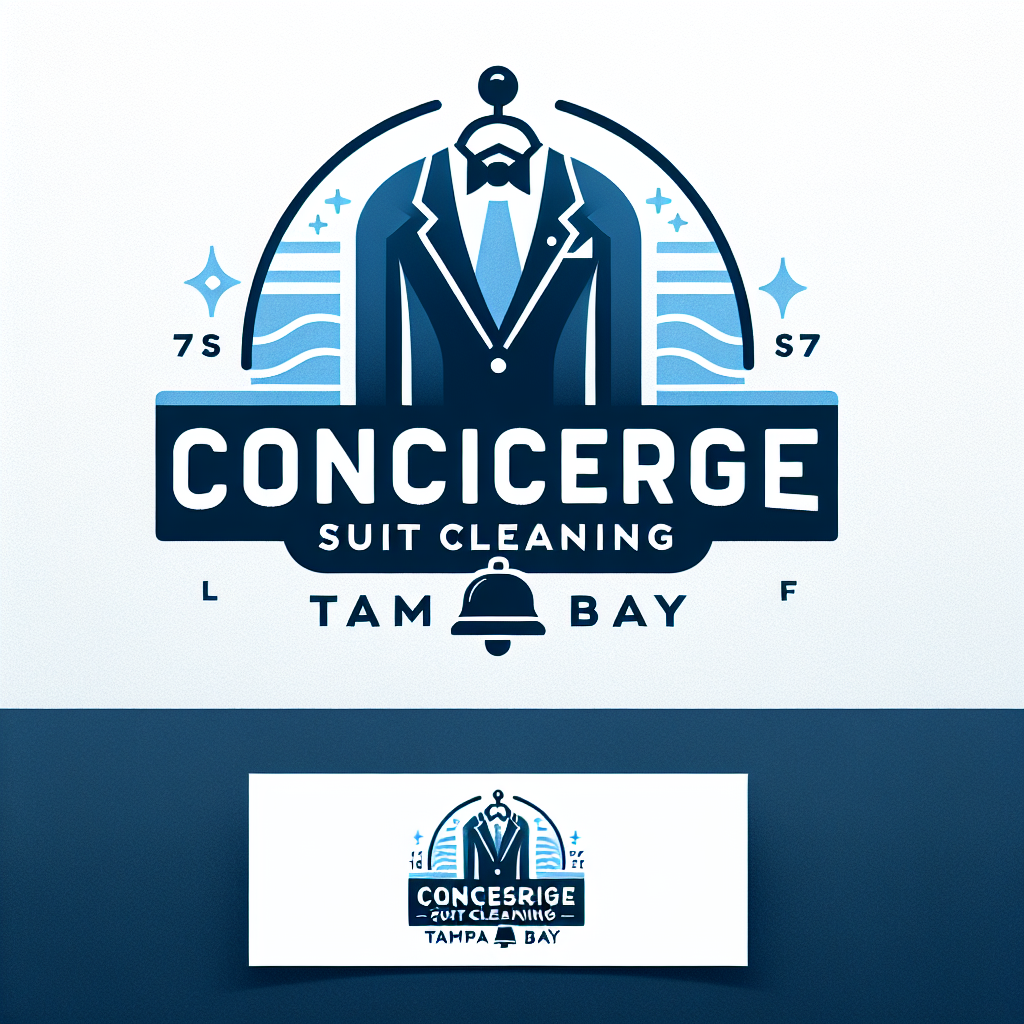My Personal Journey to Better Suit Storage After Cleaning
It all started last year when I realized how much time I spent trying to keep my suits looking sharp after each dry cleaning session. I noticed that even the best dry cleaners can’t do much if I don’t store my suits properly post-cleaning. My suits would sometimes lose their crispness or develop unwanted wrinkles, which was frustrating. That’s when I decided to dive into the art of post-cleaning suit storage, aiming to keep my wardrobe always ready and looking impeccable.
Why Proper Suit Storage Matters More Than You Think
Having a well-organized wardrobe isn’t just about aesthetics—it’s about preserving the quality and longevity of your suits. After my initial research, I learned that improper storage can lead to fabric deterioration, wrinkles, and even moth damage. According to experts at suit cleaning specialists, the right storage practices can extend the life of your garments significantly. I started applying these tips, and the difference was noticeable almost immediately.
Essential Tips for Post-Cleaning Suit Storage: My Tried-and-True Strategies
How Do I Keep My Suit Wrinkle-Free and Ready-to-Wear?
First, I always ensure my suits are completely dry before storing. Moisture can cause mold and fabric damage, so I give them ample time to air out after cleaning. Then, I hang my suits on sturdy, padded hangers that support the shoulders. This prevents unwanted creases and maintains their shape. I also make sure to store suits in breathable garment bags to protect them from dust and pests, but avoid plastic covers that trap moisture.
In addition, I rotate my suits regularly to avoid overuse of a single piece, which helps in maintaining fabric integrity. I also read up on eco-friendly suit cleaning options, such as those offered by local Tampa Bay providers, to ensure my suits are preserved sustainably.
How Can I Optimize My Wardrobe for Long-Term Suit Preservation?
One thing I’ve learned is that proper storage isn’t just about hanging suits; it’s about creating an environment that promotes fabric longevity. I keep my wardrobe cool, dry, and dark to prevent fading and fabric weakening. I also invest in quality garment bags and storage containers, which help maintain the suits’ shape and protect against pests. Regular inspections and gentle brushing also go a long way in keeping suits fresh between cleanings.
If you’re serious about keeping your suits in top condition, I recommend consulting trusted sources like expert guides that offer comprehensive advice on storage techniques tailored to different fabric types.
Share Your Suit Storage Secrets!
What are your favorite tips for storing suits after cleaning? Do you have any personal routines that keep your wardrobe fresh and ready? I’d love to hear your experiences—drop a comment below or share this post with fellow professionals who want to keep their wardrobe game strong!
Mastering the Art of Suit Storage: An Expert’s Perspective
Proper suit storage is an often overlooked aspect of wardrobe management, yet it plays a crucial role in maintaining the integrity and appearance of your garments over time. After delving into the nuances of fabric care and storage techniques, I’ve developed a set of best practices that can help any professional or enthusiast keep their suits in pristine condition for years to come.
The Science Behind Effective Suit Storage
Understanding the material composition of your suits is essential. Wool, linen, and silk each have unique storage needs. For instance, wool suits benefit from breathable covers that prevent moisture buildup, which can lead to mold or mildew. Experts at suit cleaning specialists emphasize that creating an optimal environment—cool, dry, and dark—significantly extends fabric longevity and prevents fading or fiber weakening.
Innovative Storage Solutions for the Modern Wardrobe
Beyond traditional hanging, consider the use of suit-specific garment bags made from natural fibers like cotton or linen. These materials allow air circulation, reducing the risk of musty odors and pest infestation. Additionally, using padded, wide-shoulder hangers helps maintain suit shape, especially in humid climates like Tampa Bay. For those with limited space, vacuum-sealed storage bags can be effective but should be used sparingly to avoid crushing the fabric.

Customizing Storage Based on Fabric Type and Usage Frequency
Different fabrics respond better to tailored storage environments. For example, delicate silk suits require even gentler handling and more protected environments, such as sealed storage with silica gel packets to control humidity. Conversely, everyday wool suits can withstand more frequent hanging and are suitable for over-the-door storage solutions. Additionally, rotating suits regularly prevents overuse of a single piece, reducing stress on fabric fibers and extending garment life.
How Do I Balance Accessibility and Protection?
One of the challenges in suit storage is maintaining easy access while ensuring protection. Implementing a well-organized wardrobe system with labeled sections can help. Store frequently worn suits at eye level on sturdy, padded hangers, while occasional-use suits can be placed in higher or less accessible areas. Regularly inspecting your suits for signs of damage or pests is also vital, especially in humid environments where Tampa Bay residents often operate.
For eco-conscious professionals, exploring sustainable options is equally important. Many local Tampa Bay providers now offer eco-friendly suit cleaning and storage solutions that prioritize environmental health without sacrificing garment quality.
Deepening Your Suit Preservation Knowledge
Are you aware of how different storage environments influence fabric lifespan? For example, exposure to direct sunlight can accelerate fading, while high humidity can lead to mold. Consulting comprehensive guides like expert storage guidelines can provide tailored advice for specific fabrics and climates, ensuring your wardrobe remains in top shape.
What innovative storage techniques could further revolutionize how we preserve high-end suits?
Emerging technologies like climate-controlled garment closets and antimicrobial fabric covers are gaining popularity among luxury wardrobe curators. These advancements promise to safeguard garments against environmental damage and microbial growth, especially in challenging climates. Staying informed about such innovations can empower you to make smarter storage choices, ultimately protecting your investment in high-quality suits.
If you’re interested in fine-tuning your suit preservation strategies, I encourage you to share your tips or ask questions in the comments below. And for those seeking expert assistance, professional suit cleaning services in Tampa Bay can offer customized storage advice and maintenance to keep your wardrobe impeccable—visit contact us for more details.
Exploring the Nuances of Suit Material and Storage Environments
From my personal experience, understanding the intricate needs of different suit fabrics has profoundly improved my storage practices. Wool, linen, and silk each demand tailored environments to prevent damage and extend their lifespan. Wool, for example, thrives in cool, well-ventilated spaces with breathable covers, as emphasized by expert guides. Linen suits, on the other hand, benefit from moisture-absorbing storage options, especially in humid climates like Tampa Bay, to prevent mold growth.
How Can I Create a Climate-Optimized Storage Space?
Personally, I’ve found that investing in a climate-controlled wardrobe system significantly safeguards my suits. These systems regulate humidity and temperature, mimicking ideal conditions recommended by garment preservation specialists. For those who cannot afford such luxury, simple measures like maintaining a consistently cool, dry, and dark closet, combined with silica gel packets, can make a noticeable difference. Regularly monitoring your storage environment helps catch issues before they cause irreversible damage.
What Are the Advanced Techniques for Suit Preservation Beyond Basic Hanging?
Over the years, I’ve experimented with innovative storage solutions, such as using acid-free tissue paper to stuff the shoulders and lapels, preventing creases and shape distortion. Padded, wide-shoulder hangers are also crucial, as they support the natural drape of the fabric, especially in humid climates. Additionally, vacuum-sealed storage bags have their place for long-term storage of infrequently worn suits, but I always ensure they are not compressed too tightly to avoid fabric crushing. For a comprehensive approach, consulting fabric-specific care guides can offer tailored advice based on your suit’s material.
How Can I Balance Accessibility and Preservation in a Limited Space?
In my experience, organizing your wardrobe with designated sections for everyday and occasional suits optimizes both access and protection. Using labeled, sturdy, padded hangers for frequently worn suits at eye level ensures quick retrieval without compromising support. For less frequently used pieces, higher or less accessible storage zones work well, especially when combined with protective garment bags. Regular inspections for signs of pests or fabric wear are essential, particularly in humid environments like Tampa Bay, where pests can be more active. To further enhance preservation, exploring sustainable options like eco-friendly garment covers from local providers can align with environmentally conscious practices while maintaining garment integrity.
Could Emerging Technologies Revolutionize Suit Preservation?
Absolutely. Emerging innovations such as climate-controlled garment closets and antimicrobial fabric covers are gaining traction among luxury wardrobe curators. These technologies offer a controlled environment that actively prevents microbial growth and environmental damage. As I stay informed about these advancements, I consider integrating such solutions into my storage routine to ensure my suits remain pristine over decades. Staying ahead of these trends not only preserves my investment but also aligns with sustainable practices, as highlighted by experts in eco-friendly garment care.
If you’re passionate about preserving your wardrobe and want to share your insights or ask questions, I encourage you to comment below. Exploring these advanced methods together can lead to a deeper appreciation of suit maintenance and long-term preservation strategies. For personalized advice or professional assistance, consulting trusted local services like luxury suit cleaning experts in Westchase can provide customized solutions tailored to your specific needs.
How Can I Implement Climate-Responsive Storage Solutions for High-End Suits?
In my journey of perfecting suit preservation, I discovered that climate-responsive storage systems, which adjust humidity and temperature dynamically, significantly reduce fabric stress and prevent environmental damage. Such systems mimic the optimal conditions recommended by experts at professional garment care guides, ensuring my suits maintain their pristine condition over decades. While investing in high-tech solutions might seem ambitious, even simple practices like maintaining a consistent, cool, and dark closet environment, coupled with silica gel packs, can serve as effective barriers against humidity fluctuations and UV exposure. Regular environmental monitoring with hygrometers and thermometers is crucial for early detection of potential risks, especially in humid climates like Tampa Bay, where moisture can accelerate deterioration.
What Are the Nuances of Preservation for Delicate Fabrics like Silk and Linen in Humid Climates?
Delicate fabrics such as silk and linen require specialized storage environments to prevent damage. Silk, being highly sensitive to light and humidity, benefits from sealed, acid-free storage containers with UV-filtering fabric covers. Linen, which absorbs moisture easily, demands moisture-absorbing storage solutions, such as cedar-lined chests or silica gel packs, to thwart mold growth. I’ve experimented with custom climate-controlled wardrobe compartments, which allow me to set precise humidity levels, ensuring these fabrics retain their integrity and appearance. Consulting detailed fabric-specific care guides, like expert recommendations, has been instrumental in refining my storage practices for these sensitive materials.
How Can I Integrate Organic and Eco-Friendly Preservation Techniques into My Routine?
Sustainable preservation methods are gaining traction, and I’ve incorporated eco-friendly practices such as using natural fiber garment covers and biodegradable moth repellents. These options not only safeguard my suits but also align with my commitment to environmental responsibility. For instance, I use organic cotton covers and natural cedar blocks instead of chemical mothballs, which can sometimes cause fabric discoloration. Additionally, I explore local Tampa Bay providers that offer eco-conscious cleaning and storage solutions, ensuring my wardrobe remains sustainable without compromising quality. For more insights into eco-friendly garment preservation, visit this comprehensive guide.
What Are the Latest Innovations in Suit Preservation Technology?
Emerging technologies like climate-controlled wardrobes equipped with antimicrobial fabric covers are revolutionizing how we preserve high-end suits. These systems actively regulate environmental parameters and inhibit microbial growth, which is especially advantageous in humid climates. Advances in smart fabric technology, such as antimicrobial and odor-absorbing fibers, are also making their way into luxury wardrobe solutions. Staying informed about these innovations allows me to upgrade my storage practices continually, ensuring my suits are protected against pests, mold, and environmental wear. For those interested in integrating cutting-edge solutions, consulting with professional luxury suit preservation services can provide personalized recommendations tailored to specific fabric types and climates.
Engage with Your Suit Preservation Journey
If you’re passionate about extending the life of your high-end wardrobe and want to explore advanced preservation techniques, I invite you to share your experiences and questions in the comments below. Together, we can uncover innovative solutions that meet the demands of modern lifestyles while honoring the timeless elegance of well-maintained suits. Remember, continuous learning and adaptation are key to mastering the art of long-term suit preservation. For personalized advice or professional assistance, don’t hesitate to reach out to trusted local services specializing in luxury suit care, such as luxury suit cleaning experts in Westchase.
Things I Wish I Knew Earlier (or You Might Find Surprising)
Hidden Role of Breathability
Initially, I thought all suit covers were equal, but I discovered that breathable fabrics like cotton or linen are essential for proper storage, preventing moisture buildup that causes mold or odors. Using non-breathable plastic covers trapped humidity, leading to unwelcome surprises when I finally wore my suits again.
The Power of Proper Hangers
Switching from thin wire hangers to padded, wide-shoulder ones was a game-changer. My suits maintained their shape longer, and I avoided those annoying shoulder bumps. It’s a simple upgrade with a huge impact on suit preservation.
Environmental Factors Matter More Than You Think
I used to overlook my closet’s environment until I learned that cool, dark, and dry spaces extend fabric life significantly. Humidity and light can fade fabrics and weaken fibers over time. Now, I keep my wardrobe in a climate-controlled room, and the difference is remarkable.
Rotating Suits Prevents Overuse Damage
Wearing the same suit repeatedly caused premature wear, so I started rotating my wardrobe regularly. It’s not just about variety; it’s about giving each garment time to recover, which prolongs its pristine condition.
Long-Term Storage Requires Attention
Vacuum storage bags are tempting for saving space, but I learned they can crush fabrics if overused. Instead, I use them sparingly for long-term storage of infrequently worn suits, with proper padding and care to prevent deformation.
Resources I’ve Come to Trust Over Time
- Professional suit care guides: These detailed resources from trusted dry cleaners helped me understand fabric-specific needs, especially at this site. They’re like having a personal consultant for my wardrobe.
- Environmental control experts: I found that consulting with local HVAC specialists provided insights into maintaining ideal closet conditions, which greatly improved suit longevity.
- Eco-friendly garment care advocates: Sustainable practices from reputable sources like this site have made me more conscious of eco-friendly storage and cleaning options that protect my suits and the environment.
- Online forums and communities: Sharing experiences in groups dedicated to wardrobe preservation offered practical tips that I now incorporate regularly.
Parting Thoughts from My Perspective
Proper suit storage after cleaning isn’t just about neatness; it’s about caring for your investment. From choosing breathable covers to controlling your environment, each step plays a vital role in maintaining your suits’ quality and appearance over time. I’ve learned that small adjustments—like using padded hangers or rotating suits—can make a big difference. If you’re serious about preserving your wardrobe, I encourage you to explore these tips and tailor them to your specific needs. Remember, a well-maintained suit not only looks sharp but also feels great, boosting your confidence every time you wear it. If this resonated with you, I’d love to hear your own suit storage secrets in the comments. Share this with someone who might find it helpful, and keep your wardrobe always ready for the next big occasion.

